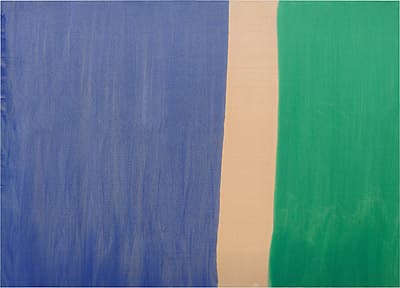
Morris
LOUIS
United States of America
1912
–
1962
Nexus II
1959
synthetic polymer paint on canvas
Diane UPRIGHT: Morris Louis, the complete paintings, New York, Harry N. Abrams 1985
274.3 (h)
x 426.7 (w)
cm
canvas
243.0 (h)
x 340.0 (w)
cm
frame
247.0 (h)
x 343.0 (w)
cm
Bequest of Marcella Louis Brenner, the artist’s widow 2010
National Gallery of Australia, Canberra
NGA 2010.583
© 1959 Morris Louis
- the artist until his death in 1962;
- by descent to his widow, Marcella Brenner (1912-2007);
- on her death, to the Marcella Brenner Revocable Trust;
- bequest of the Marcella Brenner Revocable Trust to National Gallery of Australia, August 2010
- Abstract Expressionism: the National Gallery of Australia celebrates the centenaries of Jackson Pollock and Morris Louis
- 14 Jul 2012 – 24 Feb 2013
- Diane Upright, Morris Louis: The complete paintings, New York: Harry N. Abrams 1985, cat. 215, p. 211, illus. col., p. 152;
- Christine Dixon, ‘Morris Louis, Nexus II’, artonview no. 64, Summer 2010–2011, p. 46, illus. col.
Nexus II 1959, as indicated by the title, marks the transition between two major series, Veils and Unfurled, which are represented in the National Gallery of Australia’s collection by Dalet zayin and Beta nu.[1] Nexus means connection or link, and Louis experimented with two canvases of this name. The earlier, multicoloured central waves of paint, seen for instance in Dalet zayin1959, are here divided into two plain fields of colour pushed to the sides. Or are they, rather, encroaching on the centre?
One extraordinary effect of encountering Louis’s paintings in reality, as opposed to seeing small reproductions, is the bodily resonance set up by the large canvases. In Nexus II thin washes of denim blue on the left, and jade green on the right, are separated by a central panel of off-white. The painting’s effect of pleasure, even bliss, is intensified by the purity of means employed by the artist. The dimensions of the work seem to emphasise this notion, providing an expanse of space to envelop the viewer. Despite the expanses of cream or white and the floods of beautiful colour, his paintings establish force fields. So, in Nexus II, colours push inwards from the sides, or the blank canvas pushes outwards. Or do these two effects occur simultaneously?
In the last five years of his short life, after destroying more than 300 unsatisfactory earlier works, Morris exercised an inexact geometry which seems to reject the organic forms of the first generation of Abstract Expressionists. It was in this brief period that Louis finally abjured the painterly, impasto style of Jackson Pollock and Willem de Kooning. He developed a distinctive style of staining unstretched canvases, which are sometimes unprimed. In the decades following his death, these blurred arcs and stripes would be transformed into rigorous angles by the artists of Minimalism.
Christine Dixon
[1] Dalet zayin 1959, synthetic polymer paint on unprimed canvas, 253.5 x 336.5 cm, NGA 1974.384 and Beta nu 1960, synthetic polymer paint on unprimed canvas, 259.10 x 701.0 cm, NGA 1972.317
The National Gallery of Australia holds three paintings by Louis: one of the Veils series, Dalet zayin 1959; Nexus II 1960, which marks the transition between the Veils and Unfurleds series; and Beta nu 1960 from the Unfurleds series;as well as two drawings, Untitled c. 1949 and Untitled 1950–53.
